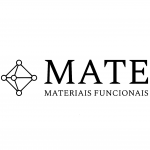MATE Equipments
| Equipment | Summary | Techniques | Specifications |
|---|---|---|---|
| Atomic Force Microscope – AFM | Atomic Force Microscopy (AFM) allows for the analysis of surfaces with atomic resolution and is one of the scanning probe microscopy (SPM) techniques. | •Atomic Force Microscopy (AFM): A technique that allows for high-resolution imaging of surface topography at the atomic level. •Operating Modes: Contact, non-contact, tapping (intermittent). •Force Spectroscopy: Measures force interactions between the probe and the sample. •Roughness Measurement: Quantitative assessment of surface roughness. | • 5 scanners with different resolutions; •Contact and non-contact modes (AAC/MAC); •CS-AFM mode; •In-situ characterization; •Electrochemical environment. |
| EV-90 Thermal Electron Beam Evaporator | Physical Vapor Deposition (PVD) System with Electron Beam. In electron beam evaporation, the vapors needed for deposition are obtained by focusing an energetic electron beam on a crucible containing the material to be deposited, heating it until it reaches its evaporation point. | •Electron Beam Evaporation (E-Beam Evaporation): A thin film deposition technique where an electron beam vaporizes the source material to form a layer on the substrate. •Deposition Rate Control: Allows fine adjustments of the material deposition rate. •Multilayer Coating: The ability to deposit multiple layers of different materials. | •3 kW Electron Gun; • Pneumatic shutter; • Working pressure ~ 1E-8 to 2E-6 torr; • Capability for 3 targets for E-beam; • Quartz crystal for thickness control (resolution: 0.1 Å). |
| 10K Janis CCR Cryostat | Closed Cycle Refrigeration System (CCR) with optical window, used for electrical and magnetoelectrical characterization, with a temperature range from 8 to 350 K. | • Agilent U2741 Modular Multimeter • Agilent U2722 Modular Current Source • Agilent U2761 Modular Function Generator • Agilent Data Acquisition • Keithley 485 Picoammeter • Stanford SR830 Lock-in Amplifier • LakeShore 331 Temperature Controller |
|
| Tubular Thermal Oven | The tubular oven is used for thermal treatment of samples, which are placed in quartz tubes. During the treatment, it is possible to introduce a flow of gases such as Nitrogen, Argon, or Oxygen. | • Thermal Treatment: Used for sintering, annealing, or calcination of materials. • Controlled Atmospheres: Allows the use of different gas atmospheres (inert, oxidizing, reducing) during thermal treatment. • Temperature Cycle Programming: Precise configuration of heating and cooling ramps. | • Automatic Time and Temperature Controller with Digital Display • Uniform Heat Distribution • Reaches Temperatures up to 1100°C • 10 Different Programs, Allowing Creation of Various Ramps and Set Points • Tubes with Controlled Environment |
| SPR – BI2000 | SPR uses the principle of surface plasmon resonance via the Kretschmann configuration to detect molecules adsorbed on the surface of a metallic substrate. | • Two-Channel SPR Detection Unit • Flow Injection System • Precision Syringe Pump • Compatible with Electrochemical Applications • Sensitivity (<10⁻⁴ degrees) for Large and Small Molecules (<100 Daltons) Allows Measurement of Binding Constants Down to Few pM⁻¹ • Control / Analysis Software |
|
| Blade Coater BCC-02 | The Blade Coater BCC-02 is a laboratory equipment for thin film deposition, capable of producing films with excellent uniformity and high repeatability, with thicknesses ranging from 10 nm to several micrometers. | • Blade Coating: A thin film deposition technique that uses a blade to spread the material over the substrate, resulting in uniform films. • Film Thickness Control: Precise adjustment of the film thickness through variation in the blade height and coating speed. • Application in Functional Films: Used in the deposition of thin films for optoelectronic and photovoltaic devices. | • Deposition Area: Up to 70 x 70 mm • Deposition Speed: From 0.5 to 40 mm/s • High-Speed Resolution: 1 mm/s • Low-Speed Resolution: 0.1 mm/s • Heated Base: Up to 150ºC (resolution 1ºC) |
| IVIUM Portable Potentiostat | The potentiostat is a fundamental instrument in electrochemical systems, capable of applying a potential and measuring the resulting current. It is an advanced version of a power supply, widely used in scientific research to study electrochemical reactions. This equipment allows for controlling reactions through the applied electric potential, serving as the driving force for these reactions. Research areas that frequently use the potentiostat include electrochemistry, corrosion, batteries, fuel cells, electroanalytical chemistry, and sensors. | • Voltammetric Electrochemistry: Techniques such as Cyclic Voltammetry, Linear Sweep Voltammetry, and Differential Pulse Voltammetry for studying redox reactions. • Electrochemical Film Formation: Synthesis and characterization of thin films via electrochemical deposition. • Potentiostatic and Galvanostatic Polarization: Precise control of potential or current during experiments. | • Potentiostatic and Galvanostatic Module • Current Range: 0 – 1 A • Current Resolution: 0.1 pA • Maximum Voltage: 4 V |
| Peripherals | The laboratory is equipped with various essential peripheral devices for conducting research. | • Power Supplies (Voltage/Current) • pH Meter • Multimeters (2) • Precision Balance • Heaters and Magnetic Stirrers • Fume Hoods (2) • Ultrasonic Bath • Desiccators • Oven |
|
| Complete Workshop | The laboratory has a room with a complete workshop, equipped with a variety of tools necessary for maintenance, creation, and development of equipment. | ||






